From its humble beginnings as Sentry Hill to its status as a revered urban icon, the history of Beacon Hill Boston is a captivating tale of transformation and resilience.
Nestled in the heart of Boston, Beacon Hill has evolved from a strategic lookout point in colonial times to a prestigious residential enclave renowned for its historic charm and architectural splendour.
This iconic neighbourhood’s journey reflects the broader narrative of Boston’s growth and development, from its early days as a colonial settlement to its emergence as a bustling metropolis.
Through centuries of change and progress, Beacon Hill has retained its distinctive character and cultural significance, serving as a living testament to its rich heritage and enduring legacy.
Join us as we delve into the fascinating history of Beacon Hill Boston, exploring its origins, milestones, and enduring allure. Stay sharp.
The Colonial Era in the History of Beacon Hill Boston
Beacon Hill in Boston is significant in American history, particularly during the colonial era.
Originally known as the Tri-mountain or Sentry Hill, this iconic landmark gained its current name from the beacon erected by early English settlers in 1635.
Serving as a warning system to the surrounding countryside, Beacon Hill became a focal point in the region’s development and played a crucial role in shaping Boston’s colonial history.
Settlement and Development
In the early 17th century, English settlers arrived in the Massachusetts Bay Colony, seeking religious freedom and economic opportunities.
The area that would later become Beacon Hill was initially called the Tri-mountain due to its three distinct peaks.
These settlers recognized the strategic importance of the hill’s elevated position, making it an ideal location for settlement and defence.
The Beacon
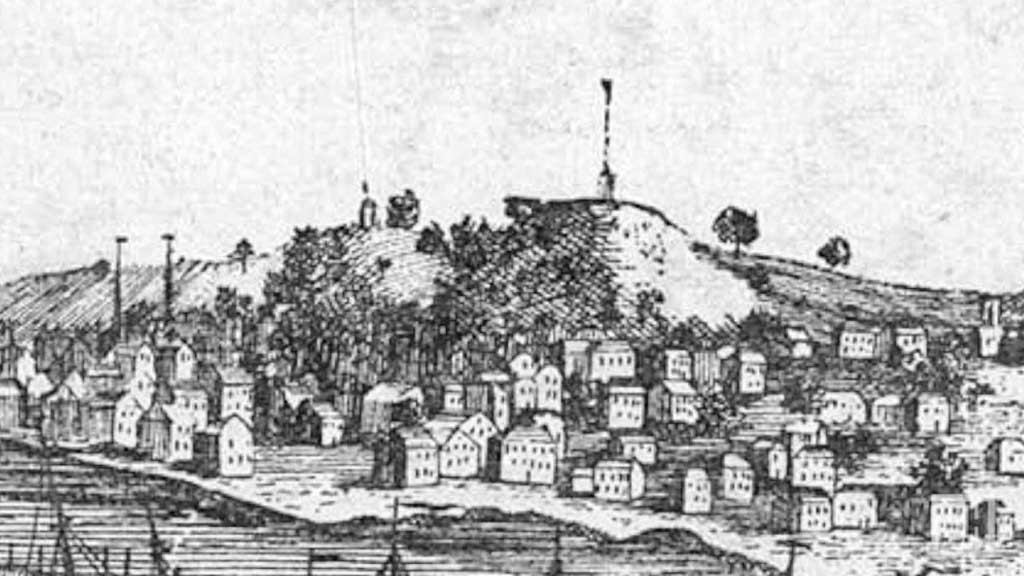
In 1635, colonists erected a tall wooden beacon atop the hill to serve as a warning system. The beacon alerted nearby communities of impending danger, such as attacks from indigenous peoples or foreign invaders.
Its placement on Beacon Hill made it visible for miles around, providing early colonists with a crucial means of communication and defence.
Economic and Social Significance
Over time, Beacon Hill became a hub of economic activity and social life in colonial Boston. Wealthy merchants, politicians, and influential families built elegant homes and established themselves in the area.
The hill’s proximity to Boston Harbor and its commanding views made it a desirable location for the city’s elite.
Revolutionary Role
Beacon Hill played a significant role in the lead-up to the American Revolution. The hill’s prominent residents were actively involved in the political and intellectual debates of the time.
Many meetings and gatherings related to revolutionary activities took place in homes and taverns on Beacon Hill, shaping the course of American history.
Legacy and Preservation
Today, Beacon Hill stands as a living testament to Boston’s colonial past. Many of the historic homes and buildings have been preserved, offering visitors a glimpse into the city’s rich history.
The Beacon Hill Civic Association and other organizations work tirelessly to protect and maintain the area’s historic character, ensuring that its legacy endures for future generations.
Boston Beacon Hill in the 19th Century
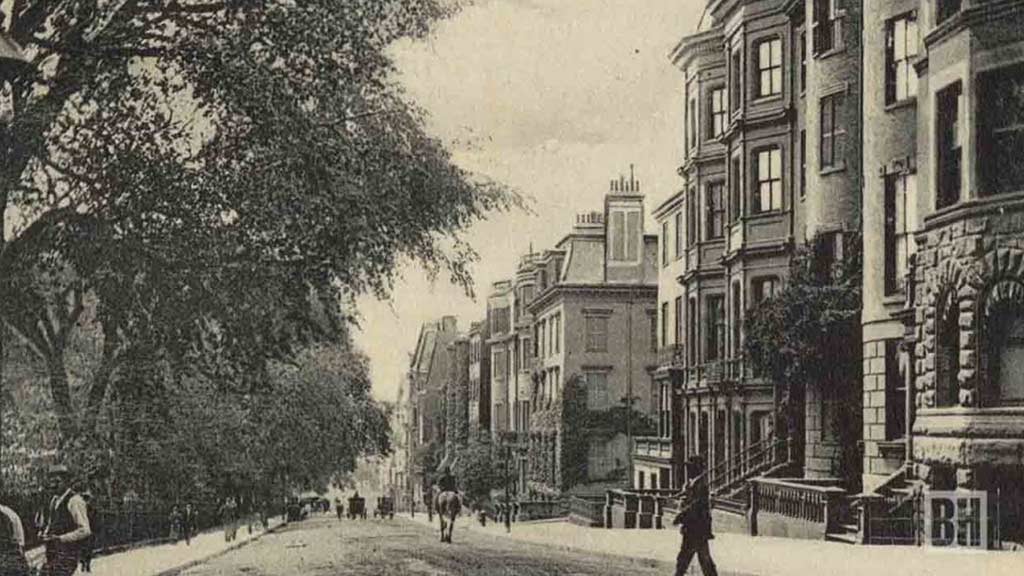
During the 19th century, Boston’s Beacon Hill continued to evolve, reflecting the changing social, economic, and political landscape of the United States.
Here are some key aspects of Beacon Hill during this period:
Expansion and Urban Development
As Boston grew into a bustling commercial and industrial centre during the 19th century, Beacon Hill saw significant urban development.
The construction of new roads, infrastructure, and public buildings transformed the area, attracting diverse residents.
Demographic Changes
The demographics of Beacon Hill underwent notable shifts during the 19th century.
While it remained an affluent neighbourhood, the composition of its residents became more diverse, with a growing number of immigrants, including Irish, African American, and European immigrants, settling in the area.
Social Reform and Activism
Beacon Hill became a social reform and activism centre during the 19th century.
Abolitionists, including prominent figures such as William Lloyd Garrison and Frederick Douglass, lived and worked in the neighbourhood, advocating for the abolition of slavery and civil rights.
Architectural Heritage
The architectural heritage of Beacon Hill continued to flourish in the 19th century.
Many of the elegant Federal-style and Greek Revival homes built by wealthy merchants and politicians in the previous century were preserved and maintained, contributing to the neighbourhood’s historic charm.
Beacon Hill as a Literary and Intellectual Center
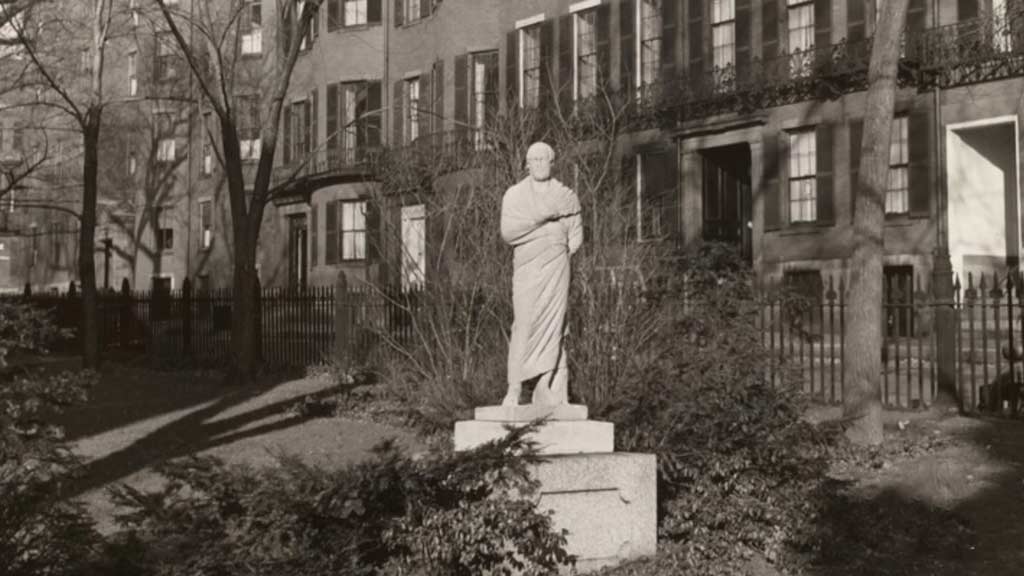
Beacon Hill also emerged as a literary and intellectual centre during the 19th century.
Writers, poets, and thinkers like Ralph Waldo Emerson, Henry David Thoreau, and Louisa May Alcott frequented the neighbourhood, drawing inspiration from its rich history and vibrant culture.
Challenges and Changes
Despite its prestige and cultural significance, Beacon Hill faced challenges and changes during the 19th century.
Industrialization, urbanization, and demographic shifts brought both opportunities and challenges to the neighbourhood, prompting debates about preservation, gentrification, and urban renewal.
In the 19th century, Beacon Hill was a dynamic and influential neighbourhood that shaped Boston’s cultural, social, and intellectual landscape and the United States.
Social and Political Significance of Beacon Hill
Beacon Hill holds significant social and political importance throughout its history, from colonial times to the present. Here are some key aspects of its social and political significance:
Abolitionist Movement
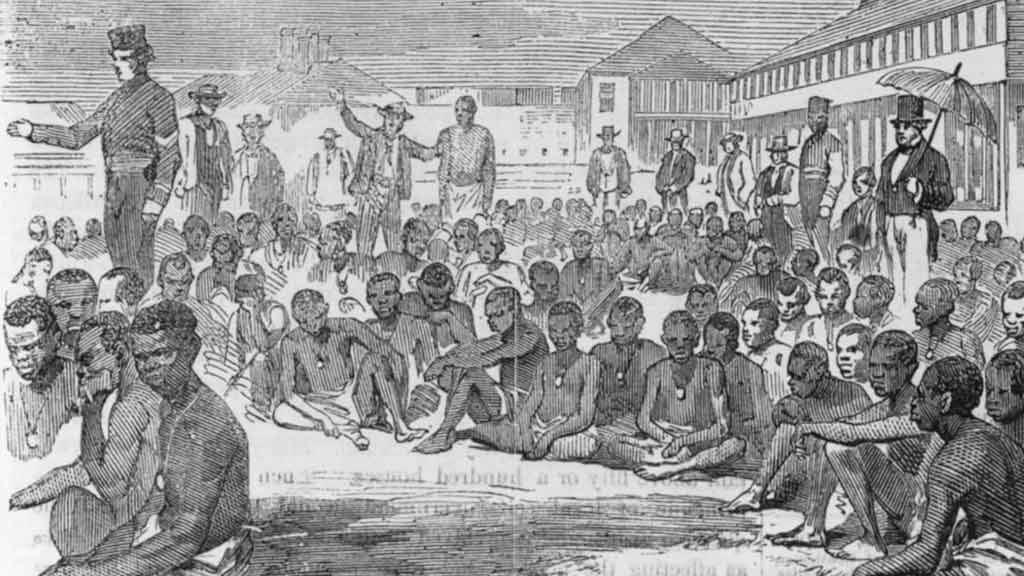
Beacon Hill played a central role in the abolitionist movement of the 19th century.
Prominent abolitionists such as William Lloyd Garrison, Frederick Douglass, and Lewis Hayden lived in the neighbourhood.
The African Meeting House on Beacon Hill served as a gathering place for abolitionists and played a crucial role in organizing anti-slavery efforts.
Underground Railroad
Beacon Hill was a key hub of the Underground Railroad, a network of safe houses and secret routes used to assist enslaved individuals in escaping to freedom.
Many homes on Beacon Hill provided refuge and support to freedom seekers fleeing slavery in the South.
The efforts of abolitionists on Beacon Hill helped thousands of enslaved individuals find freedom and contributed to the broader struggle for civil rights.
African American Community
Beacon Hill has a rich history as a centre of Boston’s African American life and culture.
Following the abolition of slavery, the neighbourhood became home to a thriving African American community.
Despite facing discrimination and segregation, African Americans on Beacon Hill established churches, schools, businesses, and social organizations that served as pillars of strength and resilience.
Political Activism
Beacon Hill has been a hotbed of political activism throughout its history. Residents of the neighbourhood have been active participants in local, state, and national politics, advocating for social justice, civil rights, and progressive causes.
The legacy of political activism on Beacon Hill continues to inspire and mobilize communities to fight for equality and justice.
Preservation and Historical Conservation
Beacon Hill’s architectural and historic significance has led to efforts to preserve and protect the neighborhood’s unique character.
Organizations such as the Beacon Hill Civic Association and Historic New England work to safeguard historic buildings, streetscapes, and landmarks.
Preservation efforts ensure that Beacon Hill remains a tangible link to Boston’s past and a source of pride for residents and visitors alike.
Beacon Hill’s social and political significance stems from its role in movements for freedom, equality, and justice, as well as its rich cultural heritage and architectural legacy.
Urban Development in the History of Beacon Hill Boston
Urban development has been a defining feature in the history of Beacon Hill, Boston, shaping its physical landscape, social structure, and cultural identity.
Here’s an overview of urban development in Beacon Hill:
Colonial Settlement
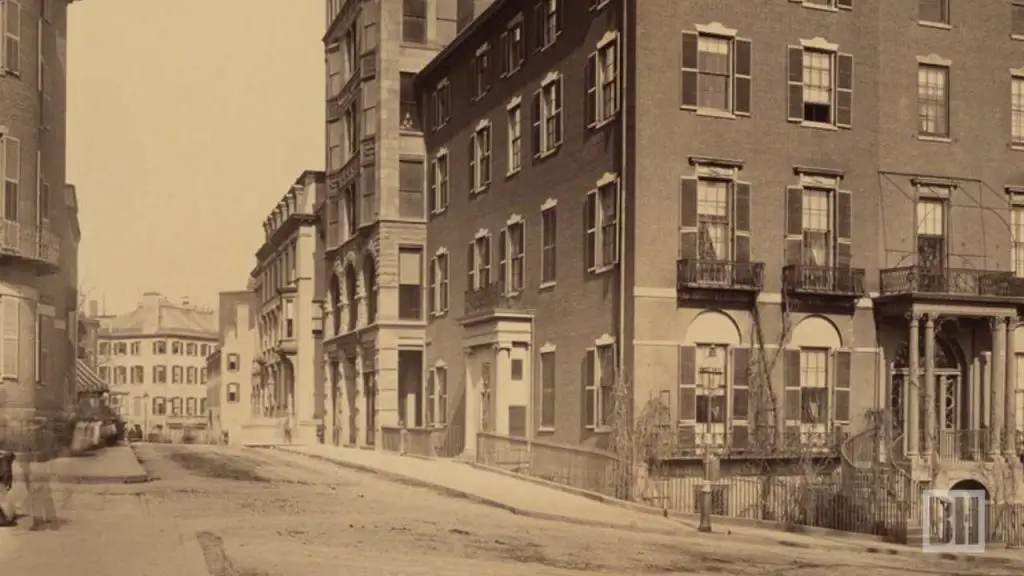
Beacon Hill’s history as a settled area dates back to the colonial era, with English settlers establishing homes and businesses on the hill.
The neighborhood grew organically around its central location and strategic position overlooking Boston Harbor.
Architectural Evolution
The architectural evolution of Beacon Hill reflects the changing tastes and styles of different historical periods.
In the late 18th and early 19th centuries, Federal-style and Greek Revival homes dominated the landscape, reflecting the wealth and sophistication of the neighborhood’s early residents.
As Boston expanded and urbanized throughout the 19th century, Beacon Hill remained a bastion of architectural preservation, with many historic buildings and landmarks still standing today.
Infrastructure and Transportation
Urban development in Beacon Hill was influenced by advances in infrastructure and transportation.
The construction of roads, bridges, and public transit systems facilitated the movement of people and goods in and out of the neighborhood.
However, efforts to modernize infrastructure sometimes clashed with preservationist sentiments, leading to debates over the balance between progress and historic conservation.
Gentrification and Redevelopment
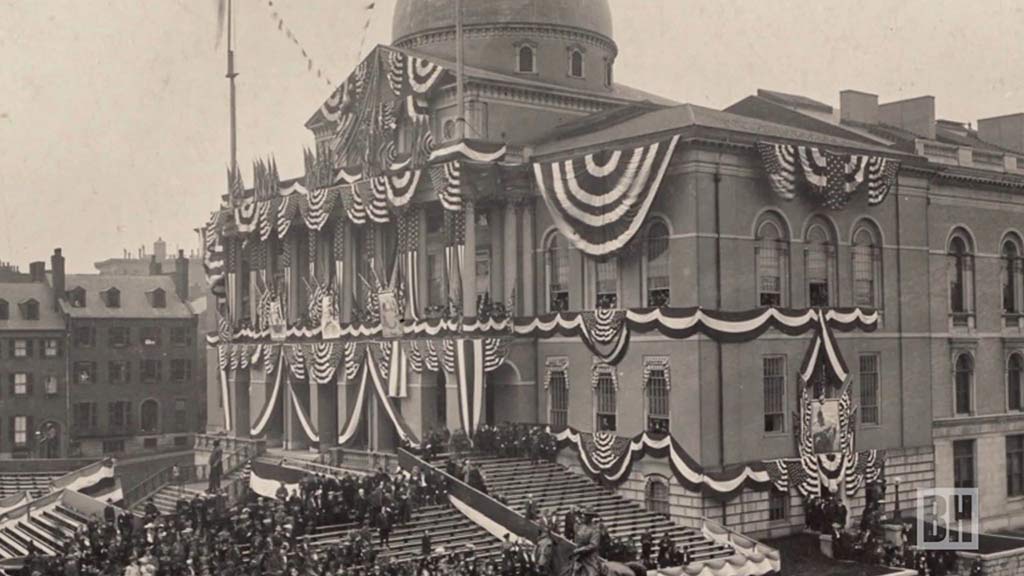
Like many historic neighborhoods, Beacon Hill experienced cycles of gentrification and redevelopment in the 20th and 21st centuries.
Affluent residents and investors sought to preserve the neighborhood’s historic character while modernizing amenities and infrastructure.
Redevelopment projects, such as renovating historic homes and constructing luxury condominiums, transformed Beacon Hill into a desirable residential area with high property values.
Preservation Efforts
Preservation efforts have played a crucial role in shaping urban development in Beacon Hill.
Organizations such as the Beacon Hill Civic Association and Historic New England have advocated for preserving historic buildings, streetscapes, and landmarks.
Zoning regulations and historic preservation laws have been implemented to protect Beacon Hill’s architectural heritage and prevent excessive development that could detract from its historic character.
Boston Beacon Hill TodayToday, Boston’s Beacon Hill stands as a vibrant and prestigious neighborhood with a rich blend of history, culture, and modern amenities. Here’s an overview of Beacon Hill’s characteristics and features:
Historic Architecture
Beacon Hill is renowned for its well-preserved historic architecture, featuring elegant Federal-style and Greek Revival homes dating back to the 18th and 19th centuries.
Cobblestone streets, gas lamps, and wrought-iron fences contribute to the neighborhood’s timeless charm and distinctive character.
Residential Enclave
Beacon Hill is primarily a residential neighborhood, attracting affluent residents and families seeking a prestigious address with convenient access to downtown Boston.
The neighborhood offers a mix of single-family homes, luxury condominiums, and apartment buildings, catering to various housing preferences.
Cultural Landmarks
Beacon Hill has several cultural landmarks and attractions celebrating its rich history and heritage.
The Massachusetts State House, located atop Beacon Hill, is a notable architectural icon and a symbol of the state’s government.
The African Meeting House, a historic site on Joy Street, commemorates the contributions of African Americans to Boston’s history and the abolitionist movement.
Green Spaces
Despite its urban setting, Beacon Hill boasts several green spaces and parks where residents and visitors can enjoy outdoor recreation and relaxation.
The Boston Common and Public Garden, located adjacent to Beacon Hill, offer expansive lawns, walking paths, and scenic views of the city skyline.
Upscale Amenities
Beacon Hill offers a variety of upscale amenities, including boutique shops, fine dining restaurants, and specialty boutiques.
The neighborhood’s charming streets are lined with quaint cafes, gourmet bakeries, and upscale boutiques, creating a vibrant and cosmopolitan atmosphere.
Community Engagement
Beacon Hill has a strong sense of community engagement, with active residents and neighborhood associations working together to preserve its historic character and promote quality of life initiatives.
The Beacon Hill Civic Association organizes community events, neighborhood clean-ups, and advocacy efforts to address local issues and concerns.
Boston’s Beacon Hill continues to embody its historic roots’ timeless elegance and prestige while embracing the vibrancy and vitality of modern urban living.
FAQs
How did Beacon Hill contribute to the abolitionist movement?
Beacon Hill was a significant hub of abolitionist activity during the 19th century.
Prominent abolitionists such as William Lloyd Garrison and Frederick Douglass resided in the neighborhood, and the African Meeting House served as a vital gathering place for organizing anti-slavery efforts, cementing Beacon Hill’s role in the fight against slavery.
What architectural styles are prevalent in Beacon Hill?
Beacon Hill boasts a rich architectural heritage, with Federal-style and Greek Revival homes dominating the landscape.
These elegant residences, characterized by their brick facades, ornate detailing, and symmetrical designs, reflect the neighborhood’s affluent past and contribute to its distinctive charm and character.
How has Beacon Hill evolved over time?
From its colonial origins as a strategic settlement to its transformation into a prestigious residential enclave, Beacon Hill has evolved significantly throughout history.
While maintaining its historic charm and architectural integrity, the neighborhood has adapted to modern trends while preserving its rich cultural heritage.
What are some notable landmarks in Beacon Hill?
Beacon Hill is home to several notable landmarks that reflect its storied history.
These include the Massachusetts State House, the African Meeting House, and the Nichols House Museum. Each landmark offers insights into Beacon Hill’s past and its enduring contributions to Boston’s cultural landscape.
Wrapping Up
The history of Beacon Hill in Boston is a testament to the neighborhood’s resilience, cultural richness, and significant contributions to American history.
From its colonial origins as a beacon of warning to its role in the abolitionist movement and its evolution into a prestigious residential enclave, Beacon Hill continues to captivate visitors and residents alike with its timeless charm and historical significance.
As a symbol of Boston’s past and present, Beacon Hill serves as a reminder of the city’s enduring legacy and its ongoing commitment to preserving its cultural heritage for future generations to cherish and appreciate. Thank you very much.
Jaclyn Lowe